Camera Bags, Lens Pouches & Camera Straps
Camera Bags, Straps and Lens Cases
A camera bag, along with camera straps and lens pouches are essential accessories for every photographer, yet a very personal choice as everyone has their own preference for organization, style, type, size and material. This article will outline some key elements of bag, strap, and lens pouches to consider when making your next purchase.
How to choose a camera bag?
So, how do you choose the one that is best for you? Camera bags make it easier to transport your camera, lenses, and other gear to your shooting location by car, air or other mode of transport. How you are traveling, for how long, and for what purpose all play into selecting a camera bag. And many creators have several bags to choose from depending on the assignment at hand.

Camera bags are available in an assortment of styles, colors and sizes and made from a variety of materials from canvas and cotton, or leather to nylon. Some are even weatherproof. They each have a distinct design and functionality. Also consider the capacity and the way to carry the bag. Here are some things to consider when looking to purchase a camera bag.
What are the different types of camera bags?
- Camera Holster Bags are designed specifically to carry and protect your camera and lens without having to detach the lens from the camera body. Since the shape of a DSLR or mirrorless camera body with a lens attached has its own shape, the camera holster has a special look. The camera holster is wide at the top and narrow on the bottom, like the shape of your camera body/lens system. Due to this unique shape, you can take your camera setup on the go and be ready to shoot without spending time attaching the lens to the camera. And you will not need to remove the lens to stow the camera/lens system away when you are done shooting. A holster bag can be worn around the waist with a belt strap, carried on one shoulder, or with the strap lengthened, carried cross-body. The con of this bag is that it may only have small pockets for extra batteries and memory cards. If you have other lenses, accessories or personal items, you will need to carry a second bag.
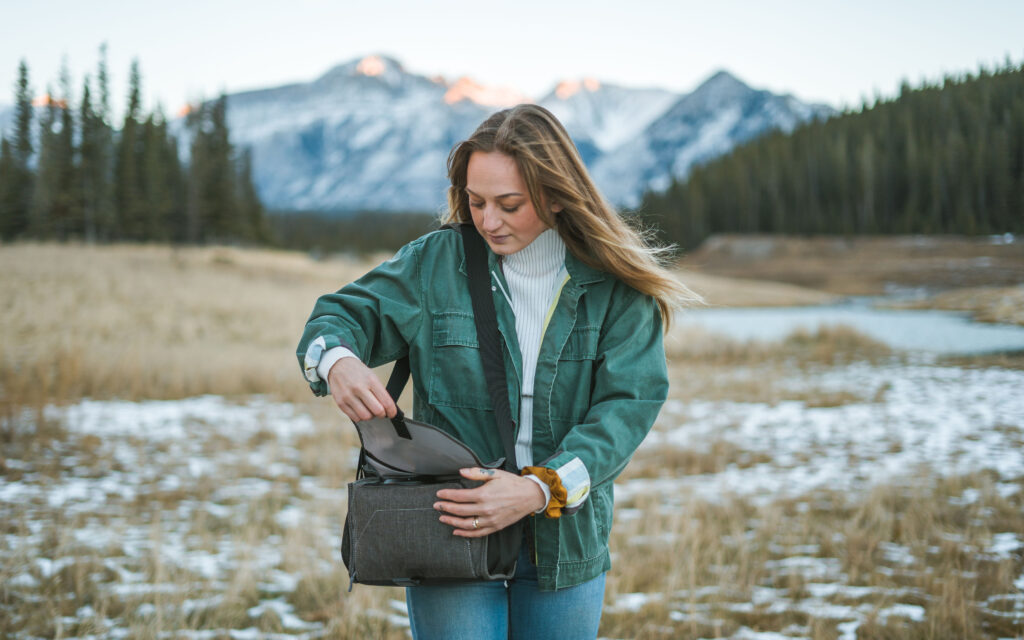
- Camera Shoulder Bags allow you to carry your gear over one shoulder. A big advantage of a shoulder bag is that you can take your camera easily and quickly out of the bag without having to put the bag on the ground as you remove the camera out of the bag from the top of the shoulder bag, which is also why it is also called a top loader. A camera shoulder bag resembles a sling bag, which we will talk about next, with the difference being that you wear a camera shoulder bag on your left or right side over your left or right shoulder.
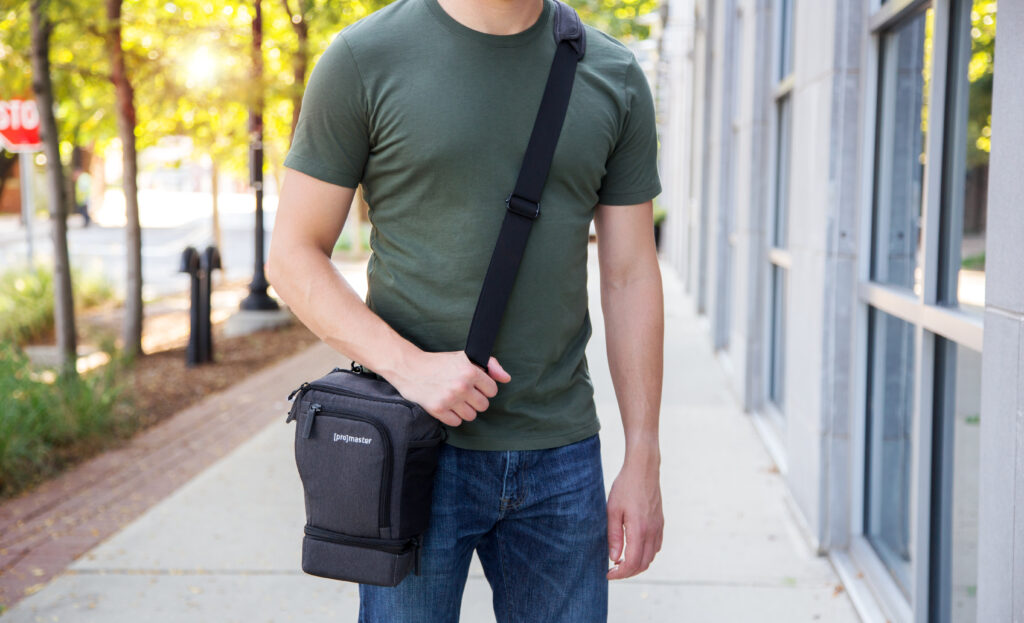
- Camera Sling Bags are basically a backpack with a single strap that, like a shoulder bag, you wear over your shoulder. The big difference between a shoulder bag and a sling bag is the sling bag is worn crosswise. A camera sling bag is a cross between a camera backpack and a shoulder bag. You carry the bag on your back, but the strap will be like a sash crossing over the upper body. The camera sling bag will not slip off your shoulder, which adds to wearing comfort. A sling bag is a good choice for short trips or long walks.
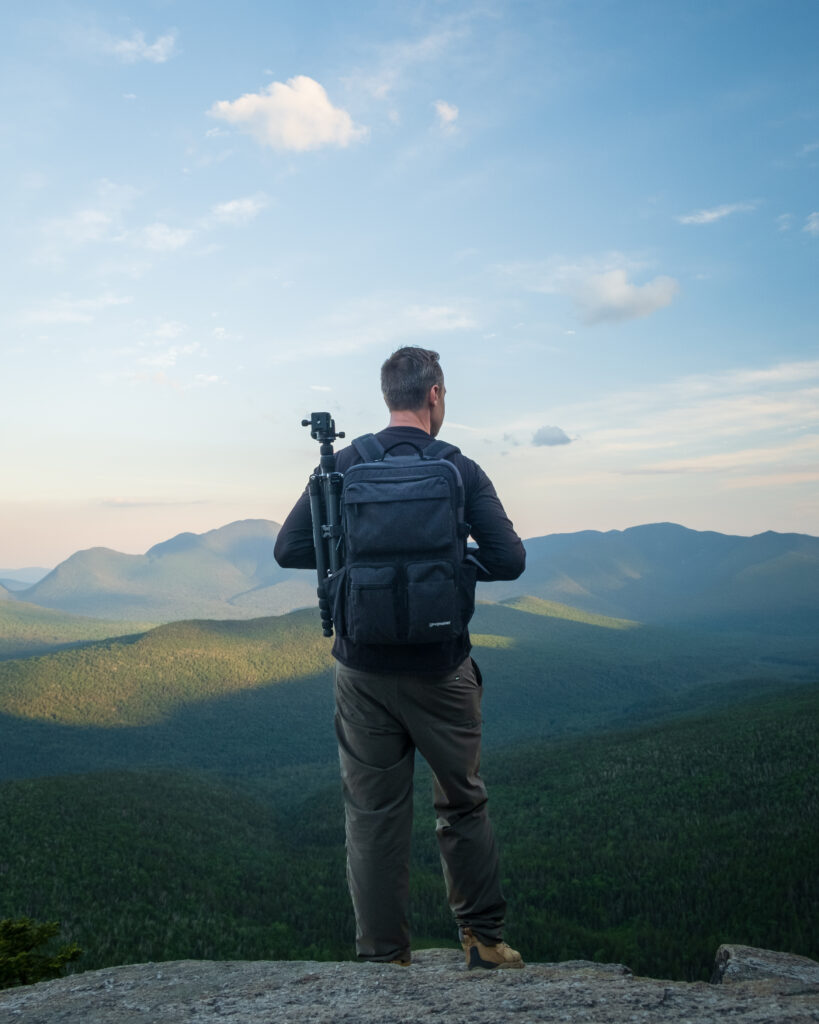
- Camera Backpacks, or your favorite backpack with some added protection, is a great way to carry your camera and gear comfortably. A backpack will allow you to carry a lot more of your equipment with the advantage of weight being distributed equally across both shoulders, leaving your hands free for shooting. Many backpacks provide an area to carry a tripod, as well as space for a laptop and/or tablet, which makes it great for traveling. With a backpack, you can fit lots of gear and accessories as well as personal items. But this can also lead to overpacking and heavier than necessary bags. Be sure to find a bag that offers the right capacity for your gear with a little extra room to grow. Backpacks today come fitted for both men and women for better comfort.
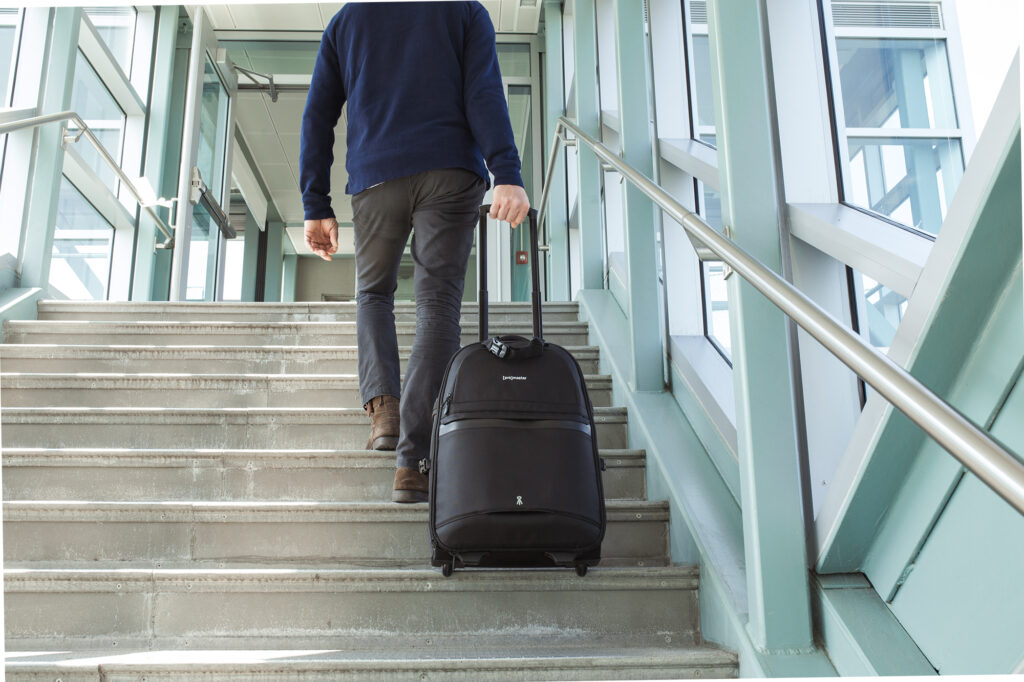
- Rolling bags or cases are like small suitcases and an ideal way to carry your equipment with you easily and comfortably thanks to the wheels and handle. A rolling bag prevents you from carrying heavy loads of equipment on your back. An advantage of a rolling camera bag is its ability to house and display all your gear at once, without the need to remove items, which you would have to with the previously mentioned bag types. A rolling camera bag is like having a portable studio on wheels. They are the ultimate travel companions with enormous carrying capacities and are perfect to take with you whether you’re driving or flying to your next destination. They also offer added protection and security, especially when traveling by air. The interchangeable dividers allow you to customize the size of each compartment to fit your needs. Just like a backpack, you can also carry a laptop or tablet.
As you can see camera bags come in many forms so you will have many choices. The next step is deciding the style, fabric and functionality, all of which become a matter of personal choice.
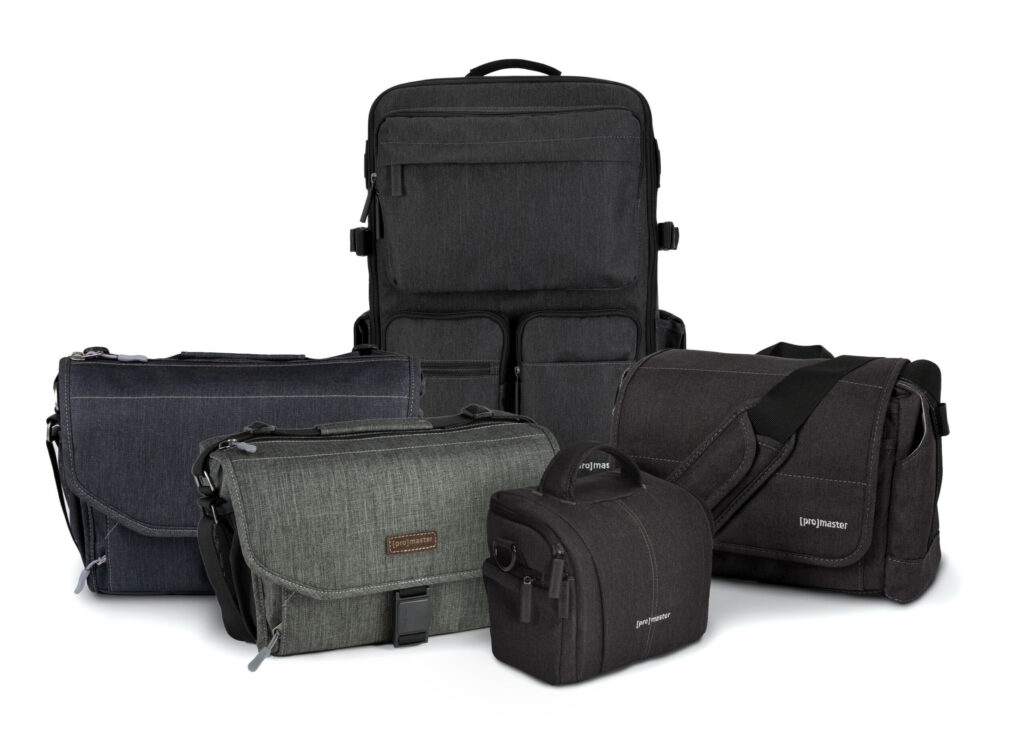
Why do I need a lens pouch?
Lens pouches or lens cases are ideal for protecting your lenses when you are on the go, or when you are storing your lenses between shooting opportunities. Lens pouches come in different styles, including soft sides drawstring types and hard sided with snap or magnetic closures. Larger lens cases will also have a strap so that you can carry your larger ultra telephoto zoom outside of your camera bag if it does not fit.
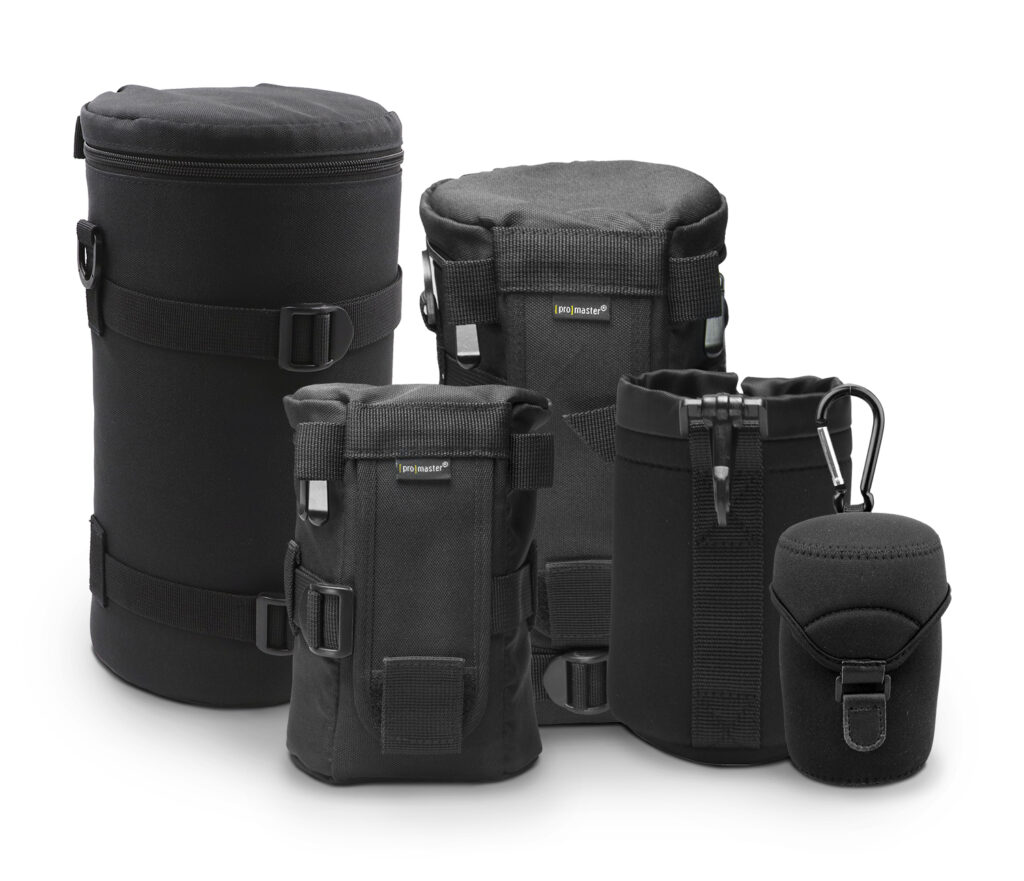
Lens pouches are typically made from neoprene or other fabric that provides protection and some shock absorption. There are lens pouch systems available where you can attach the pouches to a waist belt for easy switching of lenses. If you plan to store your lenses for some time, adding a silica gel packet to the lens pouch is a good idea.
What kind of camera straps are there?
There are many different designs of camera straps available today. Like camera bags, much will depend on your shooting style, as well as your preference for materials and style. Many people prefer the camera strap that comes with your camera, but there are other styles to consider that will offer you more flexibility for your shooting style, or more comfort. Straps come in many material types, including leather, neoprene and nylon. Here are a few popular styles of camera straps.

- A Sling Strap allows you to keep your camera and lens in an optimal position to swing to eye-level when you are ready to start shooting. Your camera might be positioned at your hip or your back when you are not shooting.
- A Harness Strap lets you carry your camera mid chest in front of you, thereby protecting the camera and lens from slipping, falling, or hitting passersby or obstacles.
- Camera Holsters allow you to keep your hands free while your camera is attached to a holder at your hip. A quick release lets you easily pull the camera out of the holder to your eye and then place it back again. The downside is that when you use the camera, it has no strap leaving the possibility of dropping the camera open.
- Contoured and Padded Shoulder Straps are worn across your body for excellent distribution of the camera/lens weight. A contoured strap will have a shape to better fit when the strap is worn cross-body but can also be worn over one shoulder. These straps have varying levels of cushioning in the area that lays over your shoulder for comfort. The camera will hang to your left or right-side body, so caution is always recommended to avoid bumping the camera lens against a wall or person.
- Neck Straps are the most traditional camera straps available and desirable as they allow your camera to be more secure around your neck, preventing theft or slipping and dropping your gear. However, neck straps can cause neck strain when worn for long periods of time and many people will switch between neck and shoulders throughout the day.
- A Camera Hand Strap or Grip is preferred by many who do not like to have a camera on their shoulder or around their neck. The hand strap fits snugly and relieves the fatigue you may experience when shooting for long periods of time. The downside is that you lose one of your free hands.

Choosing the right camera strap will depend on your shooting style, desire for security as well as for style. Like a camera bag, many creators use different strap types for different shooting situations.
